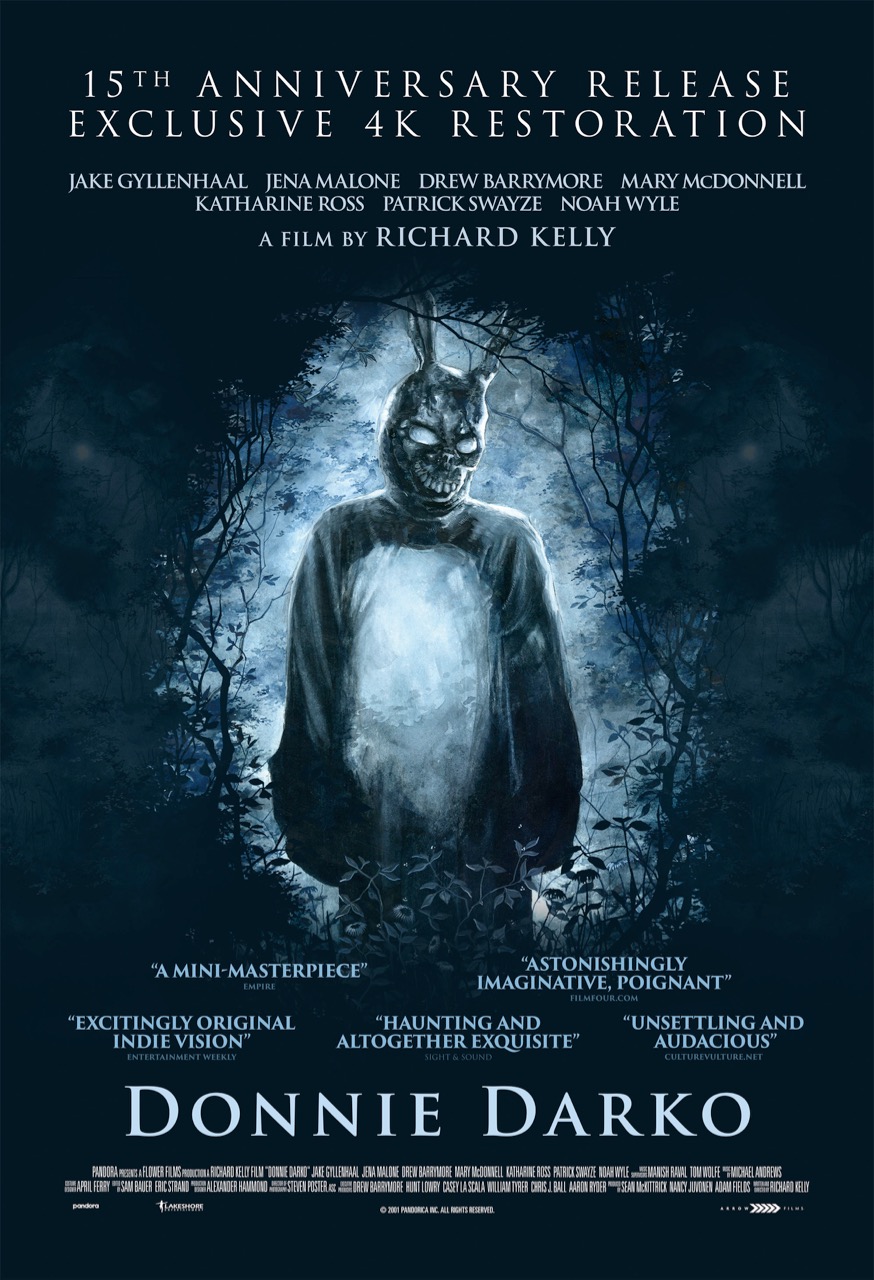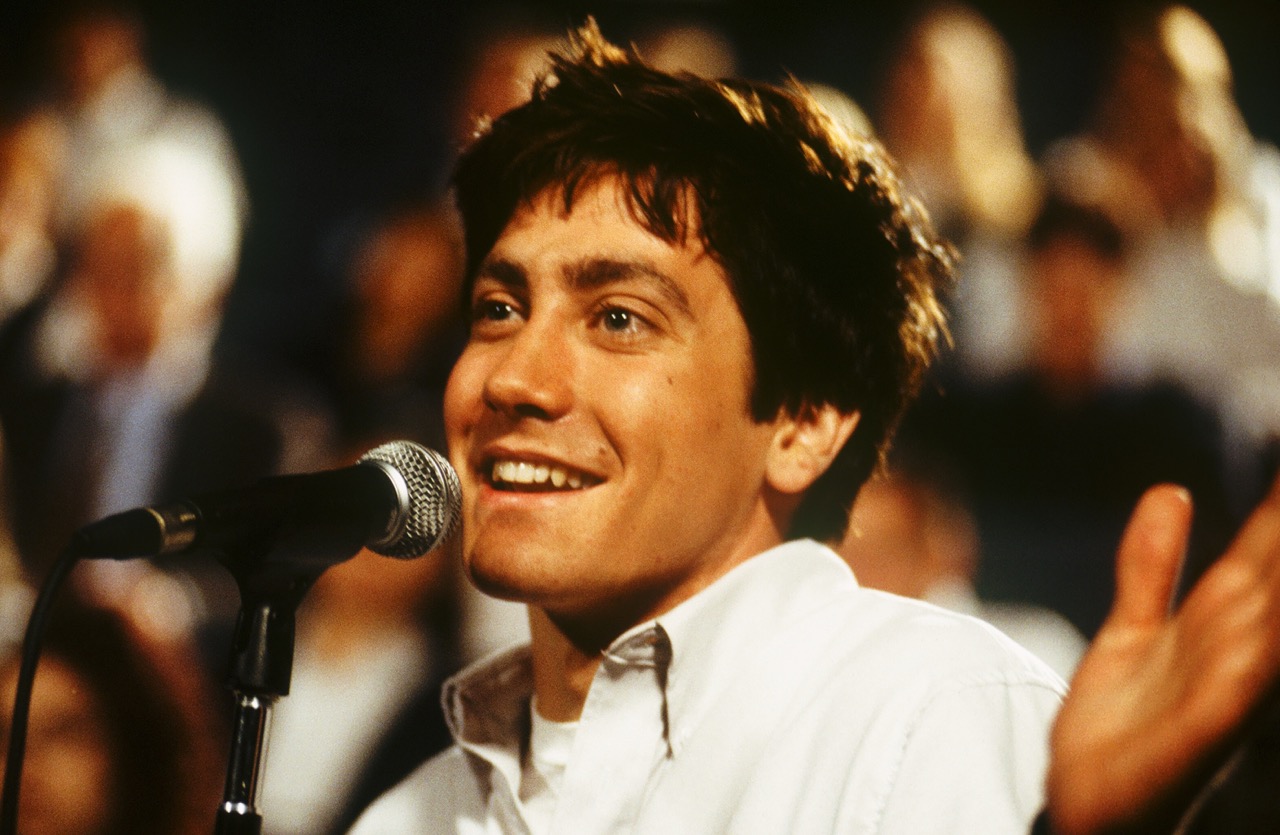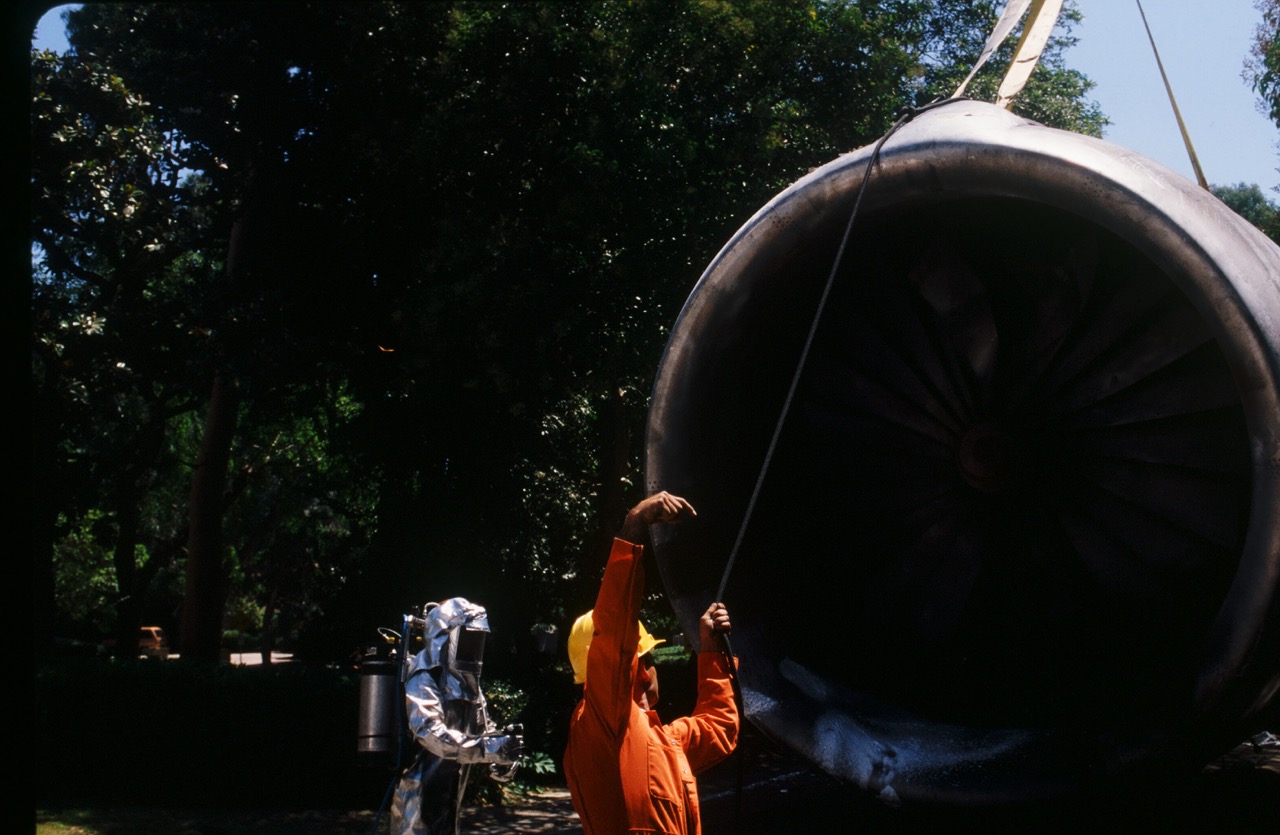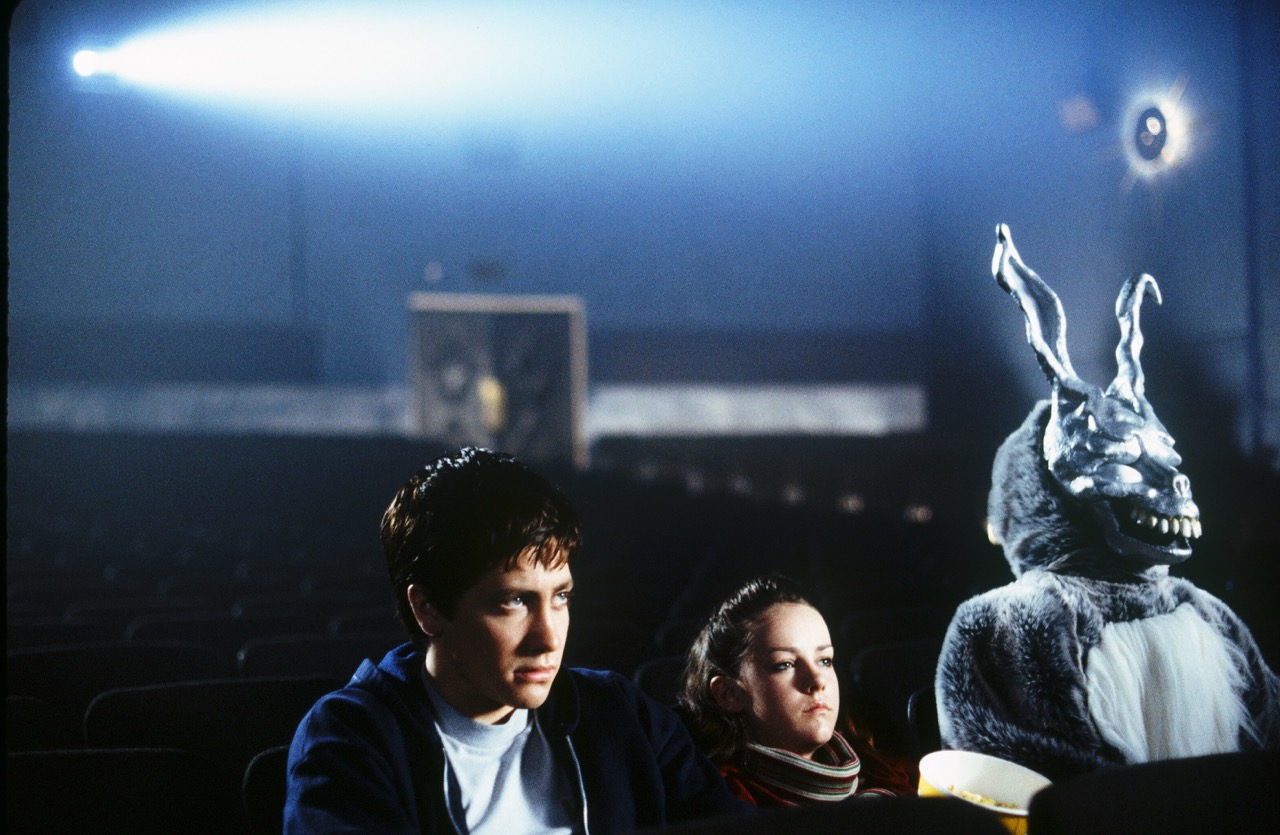 Amy Taubin
Amy Taubin
Jake Gyllenhaal fends off the apocalypse in a fresh screening of Richard Kelly’s cult classic.

Donnie Darko, directed by Richard Kelly, Metrograph, 7 Ludlow Street, New York City, March 31–April 6, 2017
• • •
Do you wake up every morning with a sense of foreboding, as if you have had a nightmare, only to be plunged into the now and future horror of our collective waking life? If so, you might find momentary catharsis at the end of Donnie Darko, Richard Kelly’s 2001 debut feature about a teenage boy who saves a world gone mad by sacrificing his life to heal a rift in the space-time continuum. Taking a cue from the lyrics of Tears for Fears’ “Mad World,” which haunts the movie, one might read the narrative almost in its entirety as Donnie’s vision in the expanded moment of his instantaneous death:
“And I find it kind of funny
I find it kind of sad
The dreams in which I’m dying
Are the best I’ve ever had.”
As emotive as it is heady and matter-of-factly political, Donnie Darko is set in a pretty, white-collar suburb in 1988, during the countdown to Halloween and the election of George H.W. Bush. A high school not coming of age story crossed with a sci-fi time travel fantasy, the film is entirely couched in Donnie’s subjectivity. Incident rather than plot driven, it still has familiar genre hooks: Donnie has adolescent conflicts with his supportive family. He sees a shrink (Katharine Ross) who worries that he is the early stages of schizophrenia. His girlfriend Gretchen (Jena Malone) needs to be protected from her possibly homicidal stepfather. His adversaries are a couple of classmate bullies and two right-wing fundamentalist teachers, whose twisted belief system has infected Donnie’s progressive public school.
The film—which starts a week-long run at Metrograph today—opens with Donnie (Jake Gyllenhaal) asleep in the middle of an empty road. As he slowly awakens to sit at the edge of a cliff, looking at the vast expanse of sky above his small town, a strange smile—oscillating between demonic and angelic—plays across his face. That smile is again on his lips the final time we see him, as he crawls into bed and falls sleep, knowing that he has chosen death to save the world. The two identical smiles, bookending the story of Donnie Darko, suggest that the film can be read not as science-fiction but as a dream—a projection of the psyche of its hero, who understands, however inchoately, that the eighties world of Reaganite politics and new-age fundamentalism is a dangerous place for himself and the people he loves. Or to be less mystical, Donnie could foresee the lethal long game of the radical right.

Still from Donnie Darko.
In his quest to avert the apocalypse—be it spurred by the politics that set our nation on its current suicide mission or a rift in the space-time continuum—Donnie has two guides: Frank, a six-foot metal rabbit with a malevolent, skull-like face who tells him that the world will end in twenty-eight days, six hours, forty-two minutes, and twelve seconds, and Roberta Sparrow (mocked by Donnie’s friends as Grandma Death), a gray-haired wraith of a woman who wrote a book, The Philosophy of Time Travel, which seems to be a theosophist version of Stephen Hawking’s A Brief History of Time. Frank lures Donnie out of his top-floor bedroom so that he can escape being killed by an errant airplane engine that plunges through the roof—the narrative’s inciting incident. While the authorities have no idea where the engine has come from, Donnie comes to believe that it is evidence of a wrinkle in time, or as Sparrow’s book describes it, a parallel universe, which is pulling what we think of as the real world toward annihilation. For Donnie to save the world, he must travel backward in time to the moment the airplane engine fell and allow it to annihilate him, thereby closing the hole in the time-space continuum. As science fiction, Donnie Darko refuses the rule-bound clarity of Terminator 2 or The Matrix, and yet the nuances and intensity of Donnie’s vision summon both one’s memories of adolescent anxieties and fears of the irrational turn America has taken today.

Still from Donnie Darko.
Fresh out of USC’s film program, Kelly wrote the script in 1997 and then spent three years getting it into production. Donnie Darko premiered in Sundance in 2001, a day before the inauguration of Bush Forty-Three, making the images of Bush Forty-One on the Darko family TV the sign of a time loop, strangely resonant with Donnie’s vision. But the film’s theatrical release at Halloween 2001, less than two months after 9/11, was a disaster. Who wanted to go to a movie that prophesized death from the sky, although J. Hoberman, writing in The Village Voice, remarked that “the events of September 11 have rendered most movies inconsequential; the heartbreaking Donnie Darko, by contrast, feels weirdly consoling. . . . Kelly’s high-school gothic seems perfectly attuned to the present moment.” It lived on as a midnight movie for two years, acquiring a cult following, which encouraged Kelly in 2004 to release a director’s cut on DVD, twenty minutes longer than the elegant original. Then in 2016, while the Trump campaign was making the madness of Donnie’s world a terrifying reality, Arrow Video in Britain released a BluRay/DVD box set of both versions in gorgeous 4K restorations supervised by Kelly. No film, except possibly Kelly’s more ungainly pop extravaganza Southland Tales (2006), better describes doomsday America than Donnie Darko. (Southland Tales zeros in on ecological destruction and media saturation, which were not as “advanced” during Donnie’s short life.)

Still from Donnie Darko.
Hawking’s aphorism “Life would be tragic if it weren’t funny” is the key both to Kelly’s direction and Gyllenhaal’s performance. Donnie Darko effortlessly and unselfconsciously borrows from unlikely bedfellows—Philip K. Dick and J.D. Salinger, Stanley Kubrick’s The Shining and Robert Zemeckis’s Back to the Future. Kelly grounds Donnie’s hallucinations in a hyper-real depiction of daily life: family dinner table conversations; Donnie’s shrink sessions; his awkward courtship of Gretchen, with whom, in one of the film’s most poignant and sinister scenes, he watches Evil Dead in an otherwise empty theater—until Frank is suddenly sitting beside them. With cinematographer Steven Poster, Kelly choreographed extended gliding camera moves within which speed varies from dreamy slow motion to super-rapid pixilation, this temporal instability building to the high-velocity backward wind through the entire film as Donnie races to meet the death he avoided twenty-eight days earlier. They also devised a lighting scheme that makes it seem as if there is a dark cloud above the town and everyone in it. The effect is visually subtle, but it creates an aura of depression and anxiety, which is echoed in Gyllenhaal’s downcast gaze and slumped-over neck and shoulders, suggesting that the knowledge in his head is too heavy to bear. Donnie Darko would be unimaginable without Gyllenhaal’s performance, still the most memorable of a fine career. Donnie’s vulnerability, his mixture of tenderness and rage, his awareness of his own blighted future, and his outsized rescue fantasy make us want to save him; that desire might be our salvation as well.
Amy Taubin is a contributing editor for Artforum, Film Comment, and Sight and Sound magazines. She is the author of Taxi Driver in the British Film Institute’s Film Classics series and co-author of the monograph James Nares (Rizzoli, 2014). She has been a member of the selection committee for the New York Film Festival since 2012. She teaches at the School of Visual Arts, NYC.